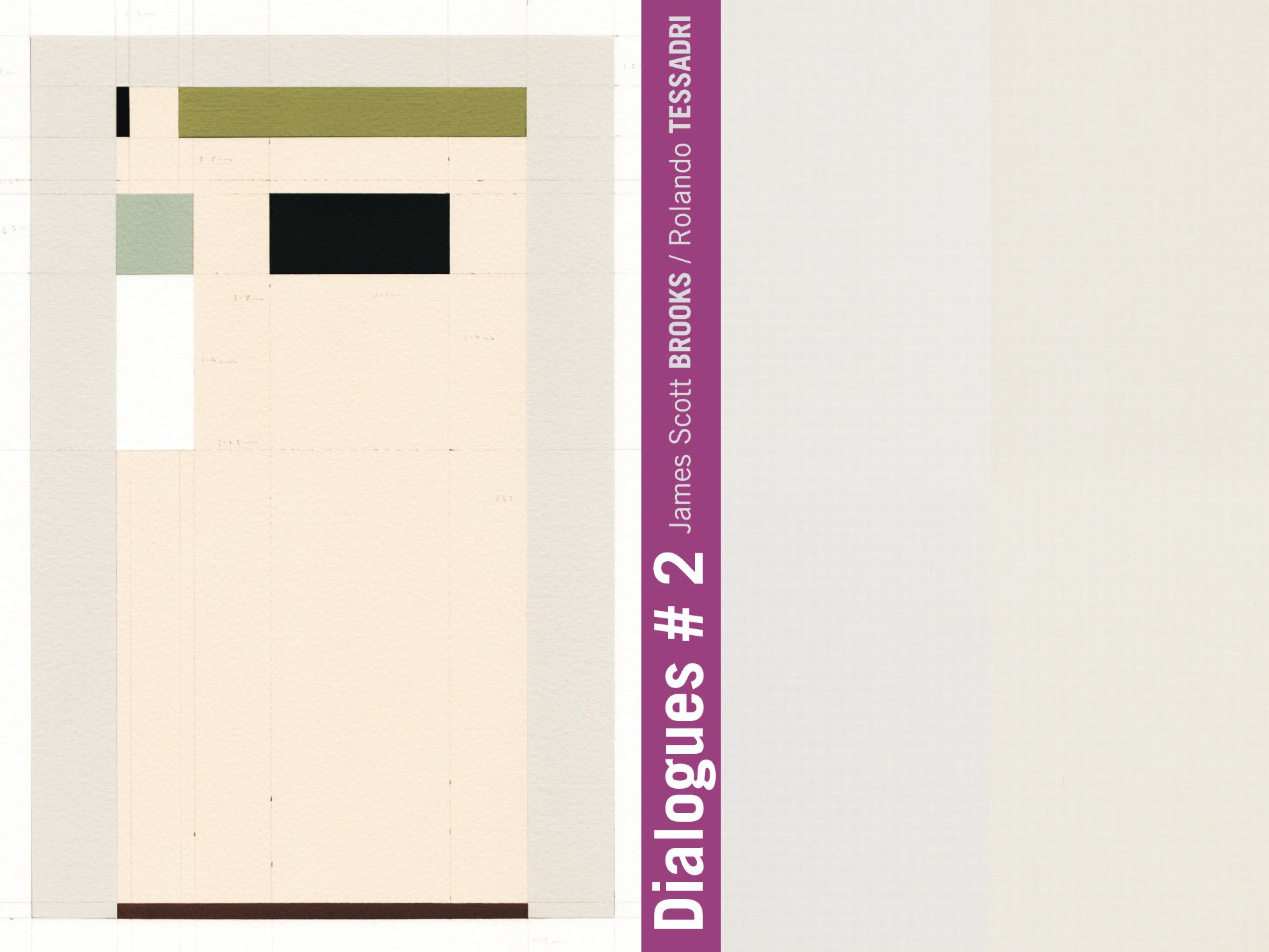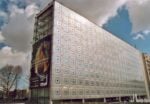Dialogues #2 – James Scott Brooks / Rolando Tessadri

Mostra doppia personale.
Comunicato stampa
Cosa si trova oltre l’astrazione? Si torna nuovamente alla figurazione oppure si raggiunge un vuoto di purificazione dove le cose sono assolute ma anche indistinte? Se la parola astrarre deriva dalla doppia radice “trarre” e “via da”, spingersi al di là delle soglie possibili di questa modalità formale – affermatasi in Occidente nel secolo scorso ma esistente dagli albori dell’umanità – potrebbe significare scarnificare gli oggetti tangibili alla seconda potenza, abbandonare doppiamente i legami con i dati visibili della realtà. Per questo va chiarito il senso del titolo sotto cui si incontrano le ricerche recenti di James Scott Brooks e di Rolando Tessadri, per comprendere quale sia la portata per ciascuno dei due artisti nel lanciarsi oltre i confini dell’astrazione e trovare eventuali contatti all’interno di questo confronto dialogico.
James Scott Brooks (Exeter, 1974) è un astrattista paradossale, le sue forme geometriche sono quanto di più lontano possa esistere da un annullamento del discorso e del collegamento referenziale, elementi tradizionalmente banditi da ogni linguaggio astraente. Esse, al contrario, rimandano costantemente a parole, nomi di persone, luoghi, spazi e paesi, distanze, viaggi, tragitti, itinerari, dati climatici e forme musicali, costruendo un idioma aniconico (=che non ammette immagini) che, per assurdo, pullula proprio di immagini, benché mentali. Alla base della costruzione formale esiste sempre un codice o una matrice di partenza, senza la quale può essere anche complesso decodificare l’itinerario concettuale che ha portato alla realizzazione dell’opera. In questa maniera, l’artista aggira completamente le scelte compositive per installarsi in between, nel mezzo di processi di traslazione che, grazie a geometria e matematica, conducono dalla parola alla figura non-oggettiva.
Anche Rolando Tessadri (Mezzolombardo, 1968) imposta le sue composizioni in maniera complessa, ponendosi, allo stesso tempo, dentro e fuori la tradizione storica dell’astrazione. Da una parte i suoi quadri reclamano grande attenzione e autonomia, sono completamente auto-referenziali e chiusi in se stessi, dall’altra, operano come dispositivi architettonici che si installano nello spazio, sottolineandone strutture e andamenti, mostrando insomma tutto quanto è esterno da sé. Anche l’impiego costante e riconoscibile di una griglia pittorica fatta di linee che si incrociano perpendicolarmente deve essere letta in maniera stratificata, come immagine che non rappresenta nulla, pur sembrando una fotografia molto realistica dell’intreccio tessile della tela che funge da supporto. Oltre a queste caratteristiche la volontà di Tessadri di lavorare sempre sui limiti del quadro, andando a sperimentare quel sottile confine tra presenza e sparizione della pittura, tra asserzione e vibrazione quasi intangibile, fa sì che la sua posizione sia ambigua rispetto alle tradizionali categorie dell’astrazione.
Ma questo è vero per entrambi gli artisti. Sia Brooks che Tessadri hanno cercato di tenersi sempre al di fuori dei codici dell’astrazione concepiti in modo limitante, hanno preferito utilizzarne le modalità per fare crescere liberamente un discorso personale. In questo senso sono partiti dai margini di un linguaggio per potersi spingere al di là dello stesso, equilibrando discorsi spesso considerati freddi con il calore e la colloquialità dell’ironia, della sensibilità, della concettualità, della referenzialità e – perché no? – della piacevolezza.
What is found beyond abstraction? Does one return again to figuration or does one reach a purifying void where things are absolute but also indistinct? If the word abstract derives from the double root "draw" and "away from," pushing beyond the possible thresholds of this formal mode-established in the West in the last century but existing since the dawn of humanity-could mean stripping tangible objects to a new dimension, doubly abandoning ties with the visible data of reality. This is why the meaning of the title under which the recent researches of James Scott Brooks and Rolando Tessadri meet must be clarified, to understand what the scope is for each of the two artists in launching themselves beyond the boundaries of abstraction and finding possible contacts within this dialogical confrontation.
James Scott Brooks (Exeter, 1974) is a paradoxical abstractionist; his geometric forms are as far from an annihilation of discourse and referential connection, elements traditionally banished from any abstract language. They, on the contrary, constantly refer back to words, names of people, places, spaces and countries, distances, journeys, routes, climatic data and musical forms, constructing an aniconic idiom (= that does not admit images) that, absurdly, teems precisely with images, albeit mental ones. At the basis of formal construction there is always a starting code or matrix, without which it can also be complex to decode the conceptual itinerary that led to the creation of the work. In this way, the artist completely bypasses compositional choices to install himself in between, in the midst of processes of translation that, thanks to geometry and mathematics, lead from the word to the non-objective figure.
Rolando Tessadri (Mezzolombardo, 1968) also sets his compositions in a complex manner, placing himself, at the same time, inside and outside the historical tradition of abstraction. On the one hand, his paintings claim great attention and autonomy, they are completely self-referential and closed in on themselves; on the other hand, they operate as architectural devices that install themselves in space, emphasizing its structures and trends, showing, in short, everything that is external from itself. Even the constant and recognizable use of a pictorial grid made of perpendicularly intersecting lines must be read in a layered manner, as an image that represents nothing, while seeming to be a very realistic photograph of the textile weave of the canvas that serves as its support. In addition to these characteristics, Tessadri's willingness to always work on the limits of the painting, going to experiment with that subtle boundary between the presence and disappearance of painting, between assertion and almost intangible vibration, makes his position ambiguous with respect to the traditional categories of abstraction.
But this is true of both artists. Both Brooks and Tessadri have tried to keep themselves always outside the limitingly conceived codes of abstraction; they have preferred to use its modes to freely grow a personal discourse. In this sense, they have started from the margins of a language in order to push beyond it, balancing discourses often considered cold with the warmth and colloquiality of irony, sensitivity, conceptuality, referentiality and why not, visual enjoyment.



